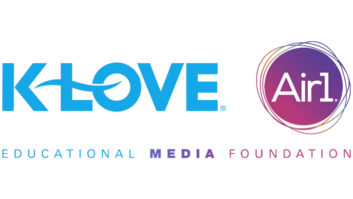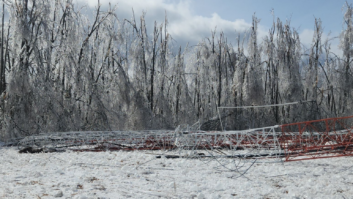
I frequently exchange interesting websites with my old and new friends in radio and TV. Some sites might be broadcast related or a link to a great old video, while others might be a link to really cool new technology. Each week I’ll share some of the more interesting sites and group them in these regular blog posts called “Off the Beaten Path.” This episode is “AFRTS — The Brass Button Broadcasters, Part 1.”
I had the honor to serve in the U.S. Air Force in what could be said to be the easiest and the most fun job in the military. The American Forces Radio & TV Service (aka Armed Forces Radio & TV Service or AFRTS) has been around since WWII (1942) as a way of bringing a “touch of home” to the men and women in the U.S. armed forces (all branches). There are civilians in AFRTS and some commissioned officers, but it’s mostly made up of enlisted members of the Air Force, Army, Navy & Marines. A book was even written about this unique “military job” called “Brass Button Broadcasters,” by Trent Christman (Turner, 1992).
I started out this column by trying to just include a few links that filled in some of the history, but the more I researched, the deeper “I dug the hole.” Since AFRTS has such a long history (and a history that geographically spans the entire globe), it was hard to keep this at just a couple of links.
Twenty five years ago, when I worked for AFRTS, it was broken up to identify regions and included AFN (Armed Forces Network), which was based in Germany; FEN (Far East Network), based in Japan; EBS (European Broadcast Squadron) broadcasting from Spain and Turkey; AFKN (Armed Forces Korean Network); AFVN (Armed Forces Vietnam Network); SEB (Southern European Broadcasting) in Italy, and others. Now AFN, SEB, EBS, AFKN, etc., are all under the umbrella name of “AFN” or American Forces Network. The “network affiliation” is still AFRTS or Armed Forces Radio & Television Service. Of interest to note is that the U.S. is not alone with “brass button broadcasters” as other countries have similar resources for their military members to “keep them closer to home.”
Until this century (the 2000s) AFRTS stations were similar to a small hometown radio/TV station. Often this included an AM, FM and/or TV station. Where some countries prohibited certain forms of OTA (over-the-air) broadcasting, AFRTS stations used cable. For instance, the station I worked for at Torrejon Air Base (in Spain) was permitted one FM OTA station, so we had cable TV channels and a cable FM channel to supplement our broadcast. Towards the end of this outlet (as the U.S. Air Force left this base), EBS (European Broadcast Squadron) included 100.2 FM (OTA), and a cable FM (using a BE Control 16 automation system), plus cable Channel 2 and cable Channel 5 (NTSC). Later we added three PAL channels to the upper VHF cable band. But today’s AFRTS (or AFN) includes many more channels via automation and satellite delivery, plus a multitude of web-streamed audio channels.
The official AFN site is a military site. You’ll get a good idea of programming by visiting that link. The interesting thing about AFRTS is that it was a combination of the best of all the TV networks. There was no separation or identification of an ABC show from an NBC, CBS or Fox show (and now the plethora of other networks and program providers).
And if you’d like a look inside their BC (or Broadcast Center as they referred to it), which would be the originating location and distribution arm of their program content. Photographer Lance Cheung (ex-military himself) has taken some stylized photos of the Broadcast Center.
This is an audition script used at the AFRTS training school at DINFOS.

Click on the Image to Enlarge
Besides being a distribution network, AFRTS also spends a lot of time in audio content creation (especially during the early years of World War II and through Korea). Here’s some information about producing albums (and “radio transcriptions”). The College of Music at the University of Colorado Boulder has a useful article.
All the military broadcasters attend a school known as DINFOS (Defense INFOrmation School) for their training. When I attended, it was a “three-phase” course with public affairs, radio and TV but I understand (from a friend who now teaches at DINFOS) that they’ve added still photography, maintenance and other courses to the curriculum after military base consolidation such down other operations such as the broadcast engineer course which had been at Lowry AFB in Colorado for many years. Here’s a bonus link to the DINFOS school alumni website (sadly on hiatus).
If you stumble across a good or unusual web site that might be of interest, please don’t hesitate to send me the link and any info you might have about it. My email address is [email protected].







